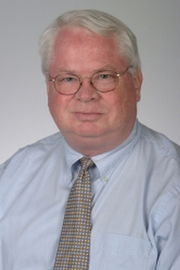
My research interests concern the cellular and molecular mechanisms underlying hypoxic and toxic injury to liver and heart cells and organs stored for transplantation surgery. In particular, my laboratory is applying new techniques of laser scanning confocal and multiphoton microscopy to characterize the physiology of single living cells, including the assessment of ion homeostasis, mitochondrial function, electrical potentials, oxygen and nitrogen free radical formation, membrane permeability and other biochemical parameters during the pathogenesis of lethal cell injury.
Increased Ca2+, formation of reactive oxygen and nitrogen species, and oxidation of pyridine nucleotides and glutathione promote a phenomenon called the mitochondrial permeability transition (MPT) that, in turn, leads to mitochondrial depolarization and uncoupling of oxidative phosphorylation. Our studies in living cells show that the MPT initially induces the sequestration and lysosomal degradation of mitochondria by the process of autophagy, a selective process also called mitophagy. However, excess MPT induction induces both necrotic cell death and apoptosis after ischemia/reperfusion, oxidative stress, excitotoxicity, calcium ionophore-induced toxicity, drug toxicity and death receptor activation in liver, heart, tumor, and brain cells. Inhibitors of the MPT, such as cyclosporin A, decrease or abolish cell killing in these models. Progression to apoptosis or necrosis after the MPT depends on the presence or absence, respectively, of ATP. Often, features of both apoptotic and necrotic cell death develop after death signals and toxic stresses. We introduce the term ‘‘necrapoptosis’’ to emphasize the shared pathways leading to both forms of cell death. These findings offer new strategies to rescue cells and tissues from irreversible toxic and ischemic injury.
We are also studying reperfusion injury to livers stored for transplantation surgery. After periods of storage associated with graft failure after transplantation, we showed that reperfusion causes sinusoidal endothelial cells to lose viability and Kupffer cells (hepatic macrophages) to become activated. Based on these findings, we developed a new solution, Carolina rinse solution, whose use during reperfusion reduces lethal endothelial injury greatly and improves graft survival dramatically. Similarly, we are developing rinse solutions to decrease reperfusion-induced myocardial infarction. We are further pursuing mechanisms of Kupffer cell activation caused by ischemia/reperfusion, endotoxin, alcohol exposure and traumatic stress, particularly the roles played by calcium, endocytosis, adenosine receptors and protein kinases. More recently, we are characterizing ischemic preconditioning as a strategy of decreasing graft failure from preservation injury, especially in grafts harvested from non-heart beating cadaver donors and reduced-size liver grafts.
Despite a detailed understanding of their metabolism, mitochondria often behave anomalously. In particular, global suppression of mitochondrial metabolism and metabolite exchange occurs in apoptosis, ischemia and anoxia, cytopathic hypoxia of sepsis and multiple organ failure, alcoholic liver disease, aerobic glycolysis in cancer cells (Warburg effect) and unstimulated pancreatic beta cells. We are exploring the hypothesis that closure of voltage-dependent anion channels (VDAC) in the mitochondrial outer membrane accounts for global mitochondrial suppression consistant with a role for VDAC as a dynamic regulator, or governator, of global mitochondrial function both in health and disease.
Brief Description
Cellular and molecular mechanisms of apoptosis and necrosis; organ preservation for transplantation surgery; mitochondrial physiology and pathophysiology, including mitochondrial permeability transition, mitophagy and calcium homeostasis; oxidative stress; ischemia/reperfusion; confocal and multiphoton microscopy of living cells.
Source: http://academicdepartments.musc.edu/biochemistry/faculty/lemasters.htm